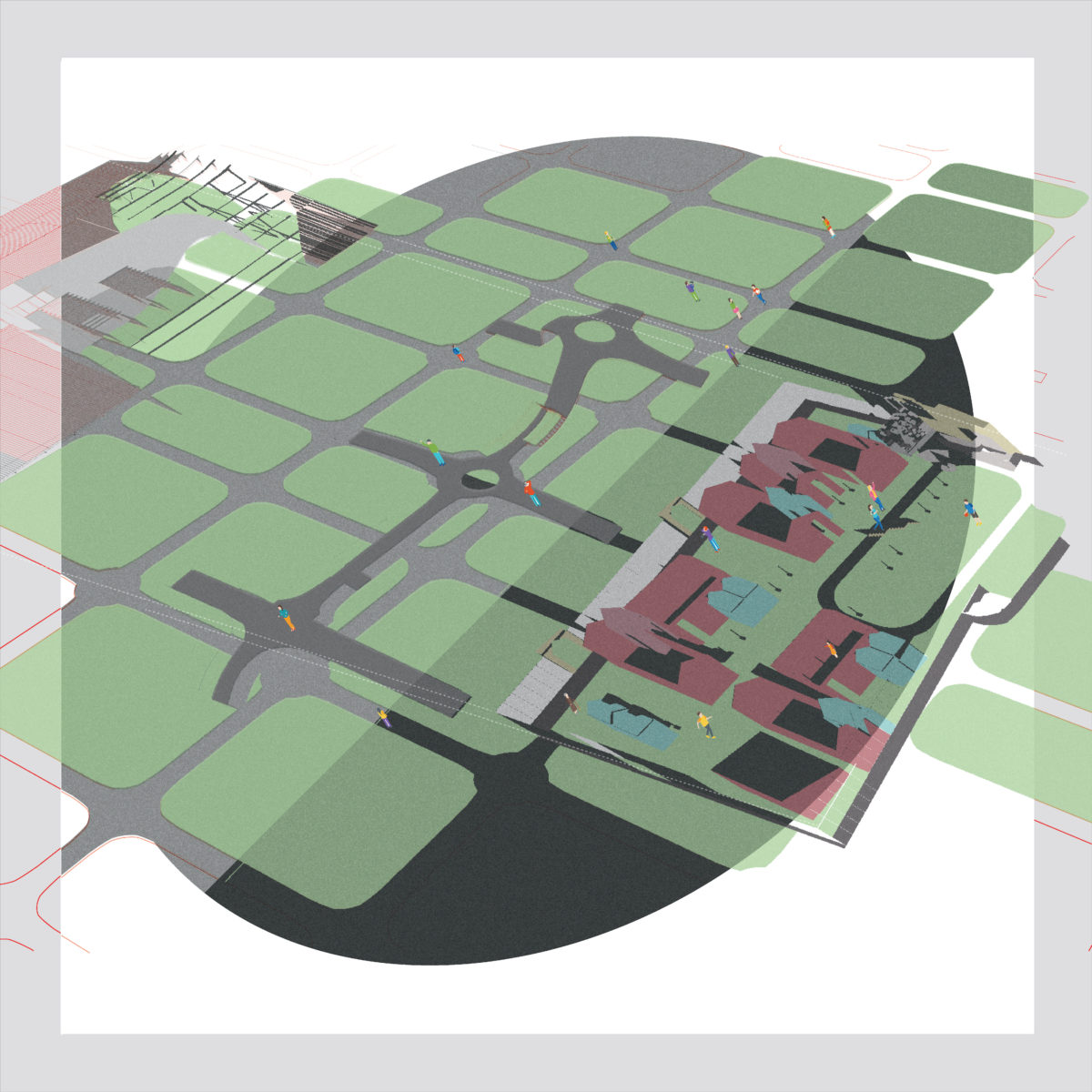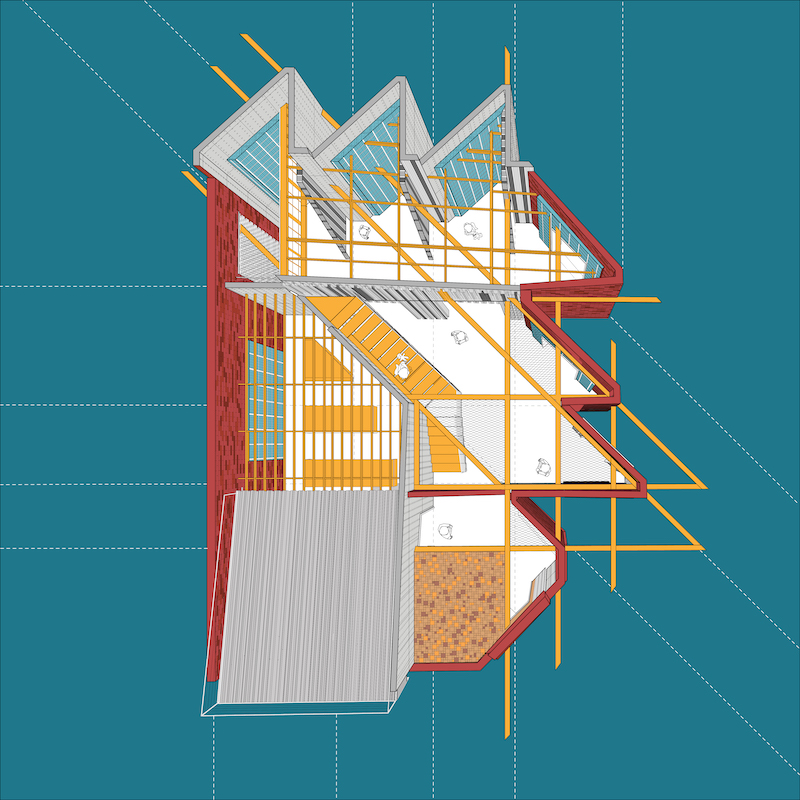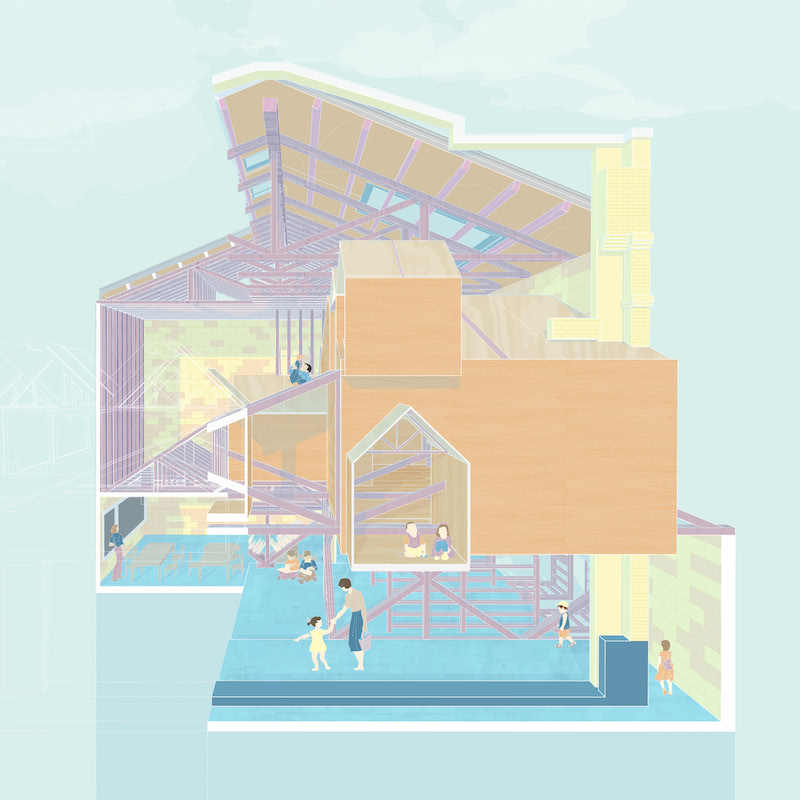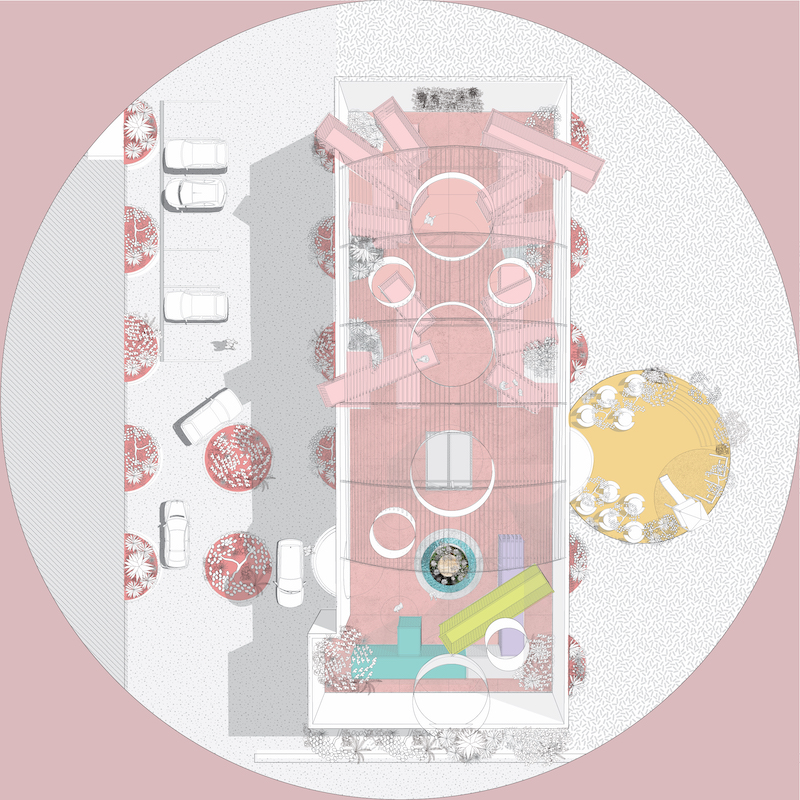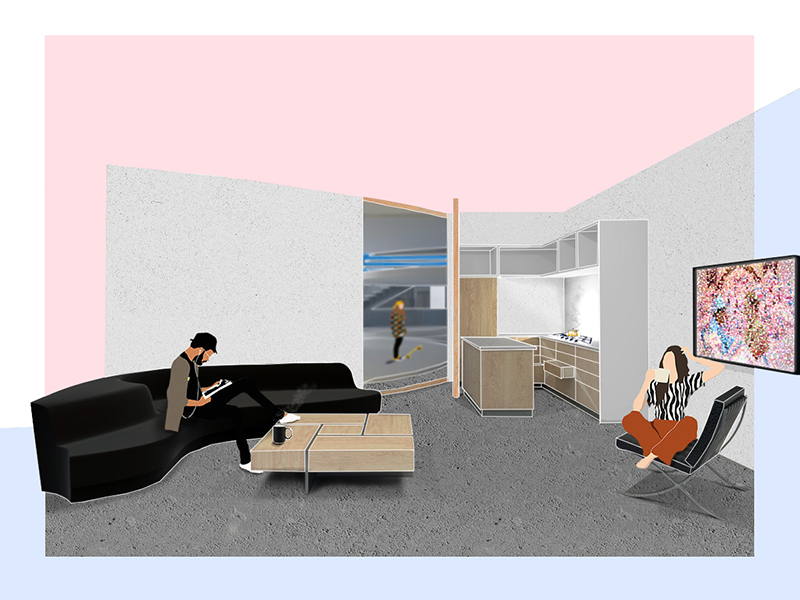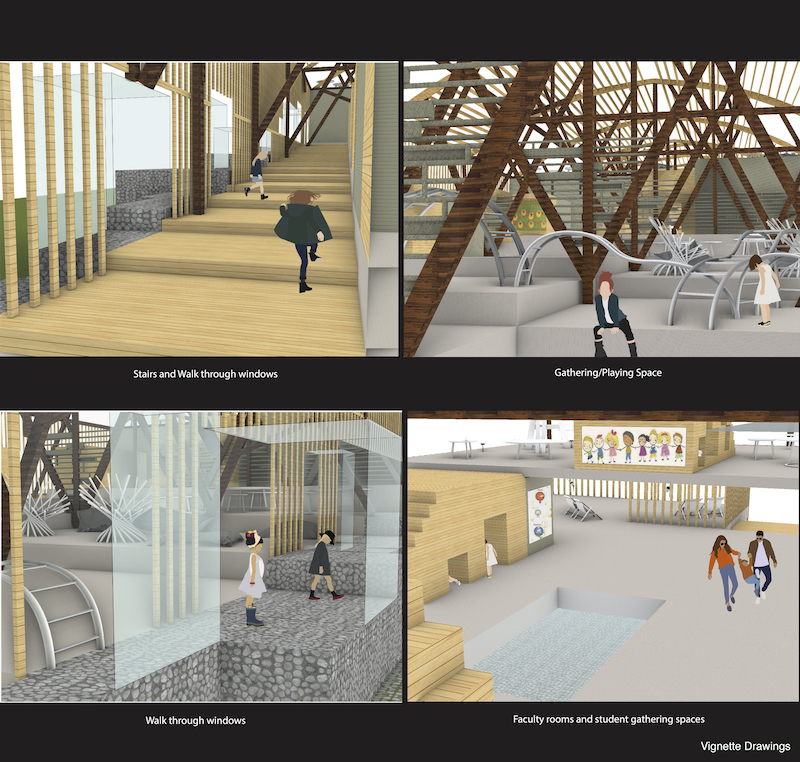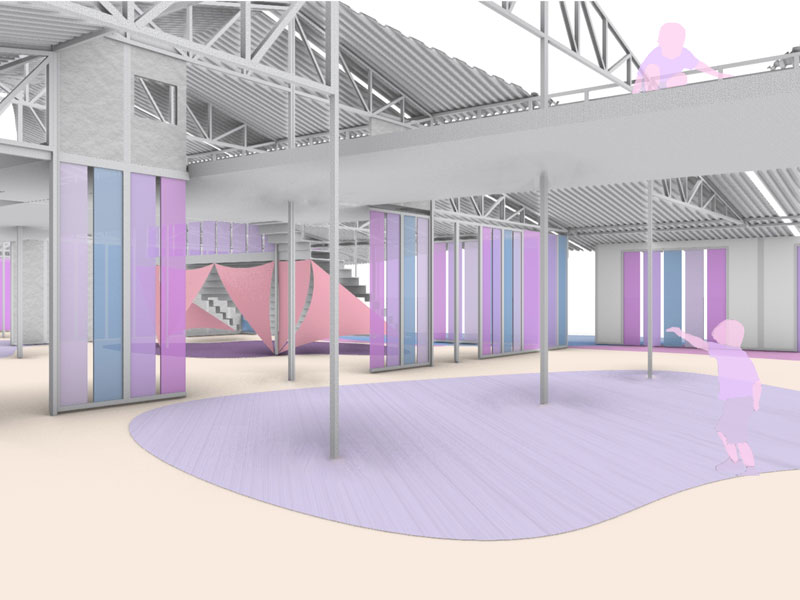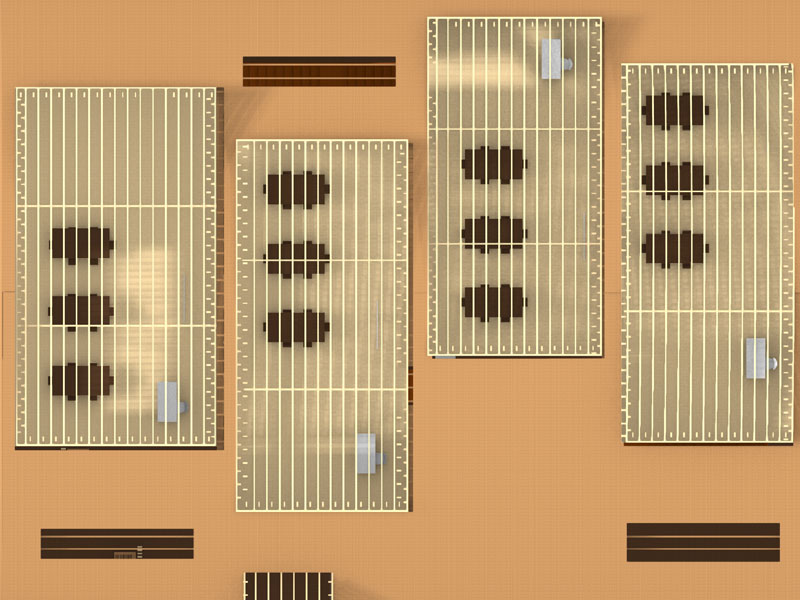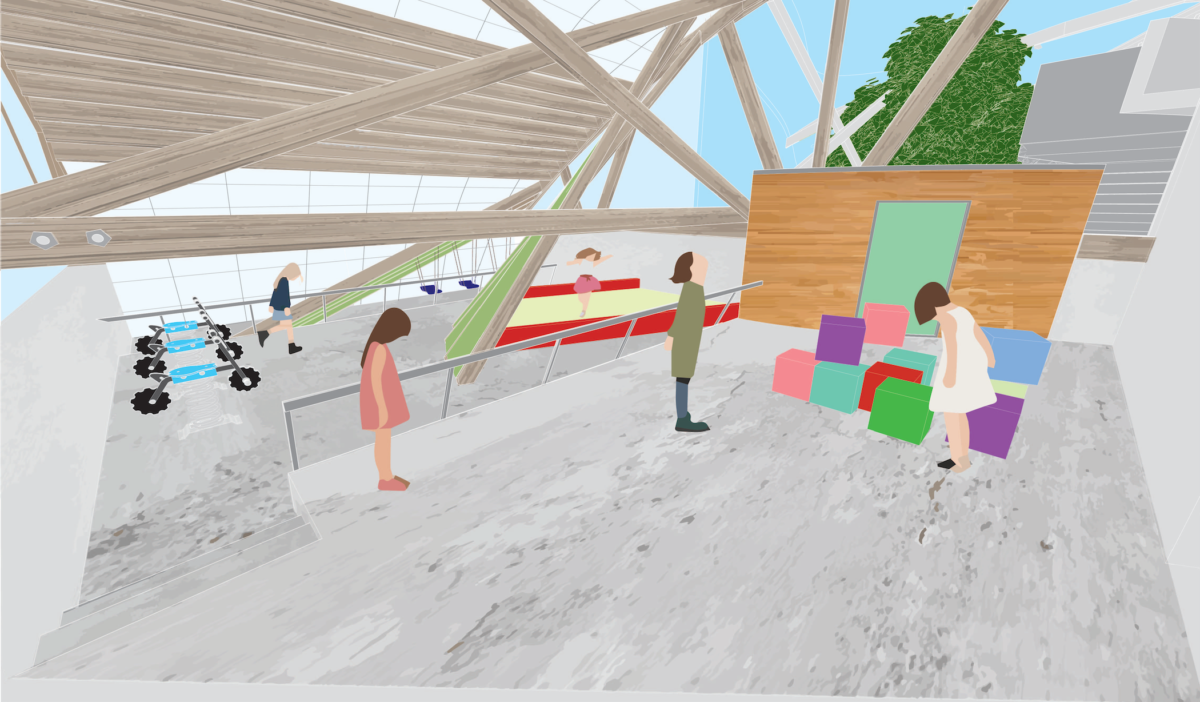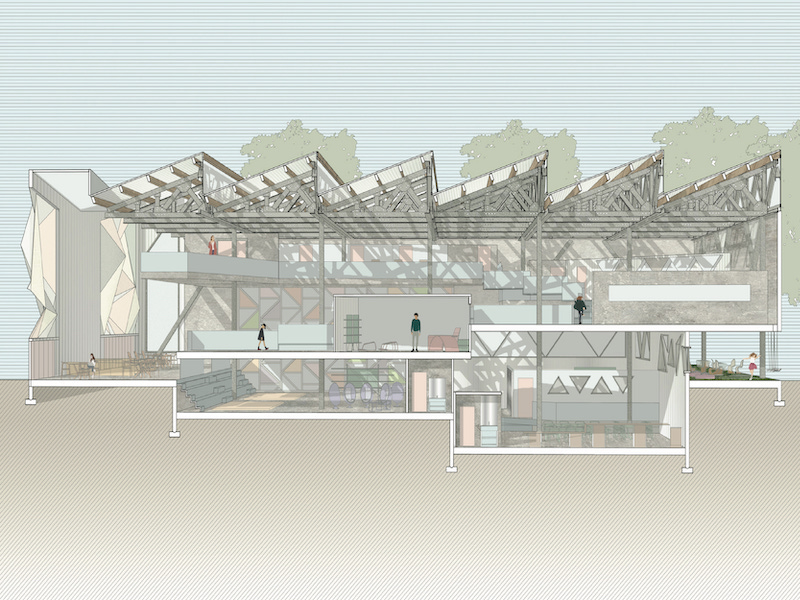THE INDUSTRIAL SHED IS TRANSFORMED INTO TO A DOMESTIC PLAYGROUND FOR CHILDREN. THIS PROJECT EXPLORES PUBLIC VS. PRIVATE THROUGH INTERSECTING
THE SUBURBAN CIRCUMSTANCE WITH THE PREEXISTING SHED. FURTHERMORE, IT USES THE STREET GRID AS A PROGRAMMATIC TOOL AND CREATES A CITYSCAPE WITHIN. THE PROJECT AIMS TO TIE IN THE LEARNING SPACES WITH IT’S SITU.
